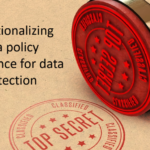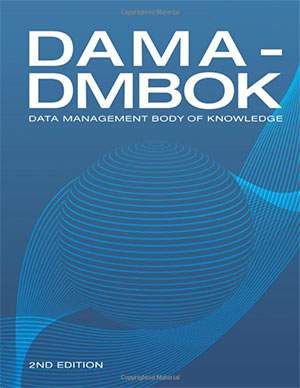
Why Does Your Organization Need a Data Strategy?
7 min read
Abstract: It has become cliché that data is growing faster than ever. However, organizations have still not developed the organizational culture, practices, and policies to take full advantage of the data assets that they already have. Organizations keep looking for silver bullets that will magically give them the answers to all their questions, and IT continues to largely operate in a vacuum and without deep insight into the data that they produce every day. This paper argues for a formalized planning process that is predicated on data so organizations can leverage data’s value to their benefit. This paper specifically describes foundational activities describing how organizations can:
- Become data-centric;
- Establish a regular, predictable, and standardized planning process; and
- Implement a viable and evolving data strategy
Introduction
Some readers are undoubtedly from the corporate world and would find this easier to read if this paper used the words “company” or “corporation.” We found, however, that these terms are not natural to our government and nongovernmental organization (NGO) readers, so we intentionally use the term “organization” throughout. Those of you from the corporate world, please bear with us. While industry, government and non-profits are often viewed as fundamentally different entities, they are similar in many ways as well. All are driven by their respective missions. All confront evolving environmental forces that disrupt operations. All are overwhelmed by the volume of today’s data, and all are struggling with deeply ingrained corporate cultures. In the spirit of compromise, we have used the term “business” when referring to non-information technology (IT) operations throughout and hope this doesn’t similarly discomfort our government and NGO readers.
Organizations have been told that big data and a new discipline called data science will help them address data challenges. Neither of these has produced the anticipated results that they promised. Big data projects have produced the same lackluster results as most IT projects (Marr, 2015). Few of them succeed on price, functionality and cost promises. Additionally, we have never found a data scientist who claims that less than 80 percent of their time is spent migrating, converting, improving and otherwise making their data ready for use, leaving only 20 percent of their time to analyze data. This is particularly noteworthy because the McKinsey Global Institute reported (2010) the country would need about 1.5 million professionals to address these challenges. It is estimated that, by 2020, demand will increase to 2.7 million (Price Waterhouse Cooper, 2017). While we acknowledge the imbalance between data scientists and demand, focusing on only one end of the equation will not suffice—improving productivity must be part of the complete solution.
Organizations need regular, predictable, standardized data and formats, a data-literate workforce and defined, documented and repeatable business processes to be truly effective, efficient and sustainable. The way organizations move to a more desirable data condition is through deliberate and focused use of a data strategy. To be more precise: developing data strategies is the first step toward organizations becoming data-centric and managing their data as a strategic asset.
Current Environment
Today, many organizations do not think of their data in this way, and they consequently develop one information technology solution after another, thinking each system will be the solution they have been missing. Too often, information technology will develop automation with no guidance from the business as to how the problem should be solved. Instead, leadership needs to realize the ultimate solution is a human and systems engineering combination that should be augmented by automation where it makes sense. When organizations begin to focus their work, processes and technologies around data, they can more tightly integrate their work and better leverage their data to the advantage of the organization and its strategic business intent.
This is not a trivial or even a moderately difficult problem to solve—it has been very difficult for organizations to make this transition. If it were not hard, there would be no need for this book, and organizations would not struggle with this challenge every day. In truth, nine out of 10 organizations are facing significant legacy data challenges (Aiken & Gillenson, 2011) and, when they confront this problem, it is imperative they have a strategy. These same organizations, however, are quick to get involved with data warehousing, business intelligence, customer relationship management, master data management and other new business and technology initiatives without having any notion of what data their organization has or how the organization needs to leverage those data assets toward a desired business outcome. After spending sometimes millions of dollars looking for silver bullet solutions, leadership becomes frustrated and disillusioned after each IT project fails to deliver true and sustainable business value from the organization’s data assets. The takeaway lesson for leaders is that there is no silver bullet solution.
No Silver Bullets
Compounding matters, vendors tout technical solutions, wooing organizations and giving management a glimpse of what may be possible. When these vendors fail to deliver on their promises, however, leadership becomes embroiled in technological quicksand, which drags the organization down and causes it to invest good money after bad. What is missing from this scenario is a strategy, one specifically focused on data and the value that organizations can use to align resources and realize the true return on their data assets. Initial academic studies purport to show that data-driven organizations perform better, are more profitable and retain more customers than those that are not data-driven. For example, Blessient (2015) and Xu (2013), relying on subjective estimates, report firms that appoint a top executive responsible for data management have superior financial performance over peers.
Collectively, we have helped many organizations, including some of the most important in the world, develop organizational data strategies. The reason organizations need a data strategy is really quite simple: most organizations have data practices that function reasonably well at work group levels, but they have been unable to scale those same practices to meet evolving enterprise needs, to make them widely shared and to ensure they are consistent, repeatable and wholly focused on business objectives. Today, most can only imagine what might be possible if the entire organization, its data assets and its knowledge workers were shaped and focused by a unified enterprise data strategy.
We have demonstrated that data is an organization’s most powerful yet most underutilized and poorly managed asset. Organizations readily admit they could do a better job strategically employing data, but they have no idea how to accomplish this. They struggle under the weight of culture, legacy and bureaucratic inertia while spending finite resources and failing to realize the full return on their investments. For example, despite the amount of research and real-world case studies, organizations still create “siloed” projects that fail to produce accurate or useful enterprise results. Simply put, data—something critically important to an organization’s success—warrants its own strategy to ensure organizations can fully realize its true and complete potential. Once implemented, organizations will set a corporate direction, and the rest of the organization can begin to align its resources to the organizational direction and begin to react quickly and nimbly to the ever-changing environment.
It has been more than 10 years since anyone has written a book on data strategy. Yet over the last decade, we have witnessed an explosive increase in the velocity, volume and variety of data sources (Laney, 2001). At the same time, new and poorly named abstractions have emerged on the scene. Phrases like big data, data scientist, and chief data officer fan the fires of anticipation and confusion, promising to answer the burning executive questions that go unanswered day after day. Most will agree that, to date, success has been limited.
The Problem Continues to Grow
Today, data is growing at a rate that is almost beyond imagination, and organizations are floundering in the face of its exponential growth and their inability to evolve their organizations at the same pace. Put simply, organizations have little idea what data they have. They do not know where it is, and they do not know what their knowledge workers are doing with it. With the growing demand for data security and privacy, it is becoming increasingly important for organizations to assert control over their data and develop the organizational regimen to position their organizations for success and the future. Success starts with developing a strategy describing how they intend to organize themselves, operate and leverage data in a way that adds value to the organization and its business.
Implementing a viable data strategy is not straightforward. There are several structural and, more importantly, cultural prerequisites that most organizations have deliberately chosen to not confront. While the procedural aspect of strategy development is straightforward and easily understood, organizations must overcome the prerequisites before they can realize the true value of their data investments.
Organizations have far-reaching data problems that include an inability to leverage data assets, an incomplete inventory of enterprise data and duplicative data processing, among many others. Organizations quickly respond, saying they have overwhelming priorities, inadequate budgets, an outdated organizational structure and intense bureaucratic rivalries that inhibit the flow of data inside and outside their organizations.
References
- Aiken, P., Gillenson, M., Zhang, X., Raffner, D., “Data Management and Data Administration: Assessing 25 Years of Practice” Journal of Database Management 22(3):24-44 July-September 2011.
- Belissent, 2015 Top Performers Appoint Chief Data Officers: CIOs Must Partner with Their CDOs To Bridge the Data Maturity Gap by Jennifer Belissent, Ph.D. and Gene Leganza with Holger Kisker, Ph.D., Leslie Owens, Carlton A. Doty, Sharyn Leaver, Heidi Shey, Alex Kramer, and Ian McPherson, Forrester Research 2015.
- Hagerty, J. (2015). Developing Buy-In for Change, 1–19.
- Hitt, M. A., Colella, A., & Miller, C. C. (2014). Organizational Behavior. Wiley Global Education
- Laney, D. (2001). 3D data management: Controlling data volume, velocity and variety. META Group Research Note, 6, 70.
- Marr, B. (2015, July 01). Where Big Data Projects Fail. Retrieved February 25, 2017, from http://bit.ly/2lNV9Ws.
- Price Waterhouse Cooper. (2017). Investing in America’s data science and analytics talent (Publication). Price Waterhouse Cooper.











